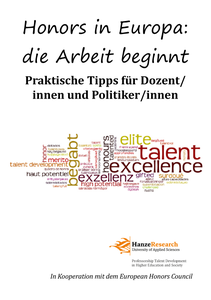This paper investigates how firms adapt their innovation strategies to cope with constraints in national institutional environments. It is a comparative case study of Dutch and British dedicated biotechnology firms focusing on a particular type of strategy, the hybrid model. Patterns of skill accumulation and learning present in the Dutch hybrids are indications of how they use institutional advantages to focus on low-risk innovation and build deeper competences while also pursuing high-risk innovation strategies. The Dutch hybrid model offers insight into how firms comply with the dominant logic of the biotechnology field even when their institutional frameworks encourage the pursuit of low-risk innovation strategies.
LINK
This paper analyzes the internationalization strategies of biotech firms in the Netherlands. We find that many of these firms are born internationals in the sense that from their inception they are actively engaged in international cooperation. However, we find that the nature of potential intellectual property and technology has a strong influence on the drivers for the internationalization process. In the theory part of the paper we connect IP strategies and technology to separate classes of business models which subsequently translate in dominant internationalization strategies. By presenting case study evidence for the Dutch biotech industry, in the empirical part of the paper we show that technological characteristics explain the variation of internationalization strategies across firms.
DOCUMENT
In de brochure ‘Aan de slag met honors’ worden onderzoeksresultaten van het onderzoeksproject Honors in Europe hertaald naar tips voor succesvol en inspirerend honorsonderwijs. De brochure is grotendeels gebaseerd op het boek Talent Development in European Higher Education – Honors programs in the Benelux, Nordic and German-speaking countries van Marca Wolfensberger van het Lectoraat Excellentie in Hoger Onderwijs en Samenleving van de Hanzehogeschool Groningen.
DOCUMENT

Why cities need economic intelligenceThe economies of Europe’s cities are changingfast, and it is not easy to predict which segmentsof the local economy will grow and which oneswill decline. Yet, cities must make decisions as towhere to invest, and face a number of questionsthat are difficultto answer:Where dowe putour bets? Should we go for biotech, ICT, or anyother sector that may have growth potential?Do we want to attract large foreign companies,or rather support our local indigenous smallerfirms, ormustwe promotethestart-up scene?Or is it better not to go for any particularindustry but just improve the quality of lifein the city, hoping that this will help to retainskilled people and attract high tech firms?
MULTIFILE

This brochure is one of the results of the research project Honors in Europe at the Research Centre forTalent Development in Higher Education and Society at Hanze University of Applied Sciences Groningen inthe Netherlands. It is based on the book Talent Development in European Higher Education – Honors programs in the Benelux, Nordic and German-speaking countries by Marca Wolfensberger, published in openaccess in 2015 at Springer Open. The book can be downloaded freely through www.honorsineurope.com.The brochure was prepared in cooperation with the European Honors Council (www.honorscouncil.eu).
DOCUMENT

Diese Broschüre ist das Resultat des Forschungsprojektes ‘Honors in Europe’ des Forschungszentrum fürTalententwicklung in der höheren Bildung und Gesellschaft der Hanze Universität angewandter Wissenschaften Groningen. Sie basiert auf dem Buch ‘Talent Development in European Higher Education – Honors programs in the Benelux, Nordic and German-speaking countries’ von Marca Wolfensberger, welches als open access beim Springer Verlag erschienen ist. Das Buch kann gratis heruntergeladen werden unterwww.honorsineurope.com Die Broschüre wurde in Zusammenarbeit mit dem European Honors Councilerstellt (www.honorscouncil.eu)
DOCUMENT

The transition to a biobased economy necessitates utilizing renewable resources as a sustainable alternative to traditional fossil fuels. Bioconversion is a way to produce many green chemicals from renewables, e.g., biopolymers like PHAs. However, fermentation and bioconversion processes mostly rely on expensive, and highly refined pure substrates. The utilization of crude fractions from biorefineries, especially herbaceous lignocellulosic feedstocks, could significantly reduce costs. This presentation shows the microbial production of PHA from such a crude stream by a wild-type thermophilic bacterium Schlegelella thermodepolymerans [1]. Specifically, it uses crude xylose-rich fractions derived from a newly developed biorefinery process for grassy biomasses (the ALACEN process). This new stepwise mild flow-through biorefinery approach for grassy lignocellulosic biomass allows the production of various fractions: a fraction containing esterified aromatics, a monomeric xylose-rich stream, a glucose fraction, and a native-like lignin residue [2]. The crude xylose-rich fraction was free of fermentation-inhibiting compounds meaning that the bacterium S.thermodepolymerans could effectively use it for the production of one type of PHA, polyhydroxybutyrate. Almost 90% of the xylose in the refined wheat straw fraction was metabolized with simultaneous production of PHA, matching 90% of the PHA production per gram of sugars, comparable to PHA yields from commercially available xylose. In addition to xylose, S. thermodepolymerans converted oligosaccharides with a xylose backbone (xylans) into fermentable xylose, and subsequently utilized the xylose as a source for PHA production. Since the xylose-rich hydrolysates from the ALACEN process also contain some oligomeric xylose and minor hemicellulose-derived sugars, optimal valorization of the C5-fractions derived from the refinery process can be obtained using S. thermodepolymerans. This opens the way for further exploration of PHA production from C5-fractions out of a variety of herbaceous lignocellulosic biomasses using the ALACEN process combined with S. thermodepolymerans. Overall, the innovative utilization of renewable resources in fermentation technology, as shown herein, makes a solid contribution to the transition to a biobased economy.[1] W. Zhou, D.I. Colpa, H. Permentier, R.A. Offringa, L. Rohrbach, G.J.W. Euverink, J. Krooneman. Insight into polyhydroxyalkanoate (PHA) production from xylose and extracellular PHA degradation by a thermophilic Schlegelella thermodepolymerans. Resources, Conservation and Recycling 194 (2023) 107006, ISSN 0921-3449, https://doi.org/10.1016/j.resconrec.2023.107006. [2] S. Bertran-Llorens, W.Zhou. M.A.Palazzo, D.I.Colpa, G.J.W.Euverink, J.Krooneman, P.J.Deuss. ALACEN: a holistic herbaceous biomass fractionation process attaining a xylose-rich stream for direct microbial conversion to bioplastics. Submitted 2023.
LINK
Boven titel staat vermeld: De symbiose van biologie en technologie. Zowel vanuit het Applied Science onderwijs als vanuit het werkveld kwam er meer vraag om biologische expertise toe te voegen aan het bestaande lectoraat Thin Films & Functional Materials.
DOCUMENT
